Book review: The Gospel of Jesus of Nazareth
by Peter Gillies
★★★★★
A fascinating look into who Jesus was and why he chose to die. Gillies says his new book is “A freethinking, scriptural look at Jesus of Nazareth & the Son of Man’s singular mission to free Israel from its tribal god.” While I hesitate to speak quite as bluntly as Gillies, I find much the same mission when I study the message of Jesus … particularly in John’s Gospel.
Beyond Gnosticism, edgy, down-to-earth, and a delight to read, here is a composite gospel you don’t want to miss. Gillies writes with the poetic beauty readers of the Bible have come to appreciate. But it must be read slowly; very slowly. I confess, his book will mean more if you know your scripture well, for then you will better recognize its depth, its subtle differences in emphasis and translation.
I’ve never been a fan of composite gospels, since to me they seem to disregard the individuality of the the Bible’s writers, each of whom had a unique theme or flavor to portray. But that’s not the point of Gillies’ work. Rather, you should read it as his own unique gospel, compiled from the stories of Jesus and the prophetic hopes written in the Hebrew Bible, meant to cut to the heart of Jesus’ purpose. It’s subtle; perhaps too subtle. Gillies says he is working on a commentary work that should render his gospel more accessible, and I very much hope he will share it with me for a further review. But for now, he should quit apologizing; we, the readers, may never uncover all the meaning he intended, but his book is still rich in meaning.
To that end, don’t you dare stop reading before the final page. Read that page again and again. Then go back and peruse the introduction, to see how masterfully Gillies has tied his thesis together, presenting a Jesus who followed a profound, brave purpose. Greater love hath no man!
A.B.C Editions, © 2014, 127 pages
ISBN: 978-2-9546352-0-0

Book review: The Big Picture: An Honest Examination of God, Science, and Purpose
by P. D. Hemsley
★★★★
Hemsley is an atheist who decided to “give God a chance,” becoming what he terms a “minimalist Christian.” He holds a healthy respect for the accomplishments of science in determining the age and workings of the universe, and the progression of evolution. He also appreciates the mysteries that still baffle us, such as consciousness, quantum entanglement, life’s origins, our seemingly intelligent cells, near-death experiences, cosmological constants … and the bewildering speed at which evolution has transpired. Something funky is going on here, something unexplainable influencing things … let’s call it God.
So this book is a journey of logic and exploration. God, concludes Hemsley, is what we call the Laws of Physics. Following Anselm’s lead, God is also Supreme Goodness. And through a discussion of free will, God is shown to be a purposeful creator, some form of individual. It’s complicated, right?
There is a lot of information in this book, so not everything can be covered in detail. “An honest examination of God, science, and purpose” may have been a little too ambitious. I don’t think there’s very much that I really disagree with in Hemsley’s book, I just found the arguments to be too compact to convince anyone still sitting on the fence. Therefore, the book is probably better appreciated as a diary of Hemsley’s own reasoned journey to faith.
For example, Hemsley brings Anselm of Canterbury’s proof for the existence of God from Supreme Goodness (dating to the 11th century) up-to-date with today’s scientific understanding, but does so with only a couple pages, leaving so many assumptions that it proves unconvincing. Our “creator” is assumed to be [1] an intelligent designer (it is irrational to imagine that we have free will, but that our creator does not), [2] eternal (because he is outside our own universe of space and time), and [3] active still today (because our physical laws need maintaining). I find all three arguments unsatisfying.
The discussion of the historicity and identification of Jesus, and the authenticity of the Bible, is another place I felt unconvinced. Hensley holds an odd combination of conservative and liberal beliefs, which seems to match his description of being a “minimalist Christian.” He attributes all of the Pauline epistles, even the pastoral letters, to Paul. But most of the rest of the New Testament he dates to after the war of 70 AD, yet still assigns traditional apostolic authorship to its books. So I couldn’t quite figure out his logic in mixing liberal scholarship with conservative tradition.
Sections that I did really enjoy include Hensley’s discussions of biological sciences, life’s purpose, and free will. I found the book to be a fun read giving me much to think about.
eLectio Publishing, © 2014, 253 pages
ISBN: 978-0615903651

Book review: The Adam Quest
by Tim Stafford
★★★★★
Best book I’ve read this year! Tim Stafford is the Senior Writer for Christianity Today, and I can see why. His writing is a pleasure to read.
The Adam Quest is a personal glimpse into the lives of eleven scientists who feel science and faith should be allies. Stafford interviews young earth creationists, intelligent design creationists, and evolutionary creationists, all of whom are firm believers and all of whom have a high regard for the Bible as a source of truth. Each tells his or her story of being led to faith. Stafford doesn’t try to separate right from wrong, he just gets out of the way and lets each person tell their own story, so we can get to know them.
It’s a dilemma. Young earth creationists have a clear understanding of Genesis, but struggle to fit science into the mold. In particular, new biochemical and genomic information hugely strengthens the evolutionary case that all life is related. But evolutionary creationists struggle with the other side of the equation: their understanding of Genesis is very much a work in progress.
I’m probably showing my bias, but the young earth creationists leave me feeling sad as they plug along, driven by an intense trust in a literal interpretation of Genesis but largely ignored by their scientific peers, working so far to the fringe of science that funding is unavailable. They have no expensive labs, no scientific exploration, just an air of desperation as they try to uphold the Word of God.
The Intelligent Design (ID) proponents (including Michael Behe, the first to propose the idea of irreducible complexity) never lack for confidence, yet fit in no better with their peers, as ID just doesn’t qualify as “science.” The ID arguments may have merit, but it doesn’t matter; they present no verifiable model to replace evolution. It’s not enough to say “God did it” … science studies how. ID, therefore, will never gain a place in the science class until IDers tackle the problem of how God did it, so that predictions can be made and tested. IDers claim scientific exploration into their views can be done, but as yet no one is doing it.
But believers in evolutionary creation have their own struggles. They are habitually charged with destroying the faith of fellow Christians. Christianity is supposed to distrust science, it’s supposed to oppose the heresy of Darwinism. This is drilled into evangelicals at a young age, and since most evangelicals are not trained in science, it’s very difficult for them to understand just how solid the scientific evidence for evolutionary biology really is.
Here I must give a special plug to Simon Conway Morris, whose views about directed evolution are absolutely fascinating. He believes if we were to rewind and replay the tape of evolution, it would surely travel a different path, but would ultimately converge much the same way it did this time around. Humans are inevitable. I have already ordered his 2003 book Life’s Solution: Inevitable Humans in a Lonely Universe, so fascinating is his theory of convergence.
Stafford then wraps up by presenting his own opinion on the matter, yet humbly admitting there is still much to learn, if only science and faith will understand that they are allies.
Thomas Nelson, Inc., © 2013, 232 pages
ISBN: 978-0-5291-0271-3

Book review: Process Theology: Embracing Adventure with God
by Bruce Epperly
★★★★★
Process Theology looks at God as not immutable and eternal, but as temporal and affect-able. It describes a God who is personal, who we can share a relationship with, and who cares about all living things. These are my own words, gleaned from the feelings Epperly’s work left me with.
I confess to feeling ungrounded through half of the book. I had not heard of Process Theology before, and it was ambiguous and difficult for me to pin down. Epperly’s approach is to prance around it in circles, poking it open here and there with a stick. Consequently, though I developed a sense for Process Theology, I could never nail down a definition … and when I went in search of a definition through Google, I felt just as discombobulated. Had I trusted Epperly and let him continue his dance around the outside, I would have been better off. I would have slowly begun to grasp the point: that God is a partner with us in healing the world. God and the world are profoundly interdependent.
The result of this way of interacting with God is a vibrant, living faith that never turns stale. Process theology affirms that God still speaks to us today, that our understanding and growth continues with new revelation. Christians are not alone in sharing in the Divine. Wherever truth and healing are present, God is its source, and through respect for other religions, we can grow in spiritual wisdom. Epperly finds no contradiction here with John 14:6, which states that “no one comes to the father except through [Jesus].” Epperly’s revelation of “Christ” as a life-giving reality permeating multiple belief systems is refreshing, affirming pluralism and goodness.
I really enjoyed this book, and was left hungering for more. This is another Topical Line Drive booklet by Energion Publications, short and sweet–just 40 pages. I noted on the back cover that Epperly had previously authored a book titled Process Theology: A Guide for the Perplexed. If I can get my hands on a copy, I’ll let you all know what I learn.
Bruce Epperly is Professor of Practical Theology and Director of Continuing Education at Lancaster Theological Seminary, Pennsylvania, USA.
Energion Publications, © 2014, 40 pages
ISBN: 978-1-63199-002-1

Book review: How Do We Know? An Introduction to Epistemology
by James K. Dew Jr. and Mark W. Foreman
★★★★★
How do we know what we think we know? Dare we claim to know anything at all about God, or can we speak only about what we believe? Is it time to throw up in our hands and give in to postmodernism?
Don’t buy this book looking for an argument for the existence of God. That’s not the focus. This is a very good introduction to epistemology, with only a light Christian tint. Until the final pages, little is said about knowledge of God, and when we do get to the topic of divine revelation (for that is our primary means of knowing anything about God), the argument for why the Bible story of Jesus is reliable history is unfortunately too brief to be helpful.
Instead, the book hopes to introduce its readers to the philosophy of epistemology–that is, the study of the nature and limits of human knowledge. Dew and Foreman are both associate professors of Philosophy. They start out with the long-standing definition of knowledge as Justified True Belief (JTB), provide a few counter arguments to show the inadequacy of that definition, and then lead into some of the deeper issues. What is truth? Where does knowledge come from? Do we really need justification? How and why do we believe? Does “revelation” count as knowledge? (This may be the most important question in the book for Christians.) And how certain can we be?
These topics are deeper than they sound, but you don’t need any background in philosophy to follow the discussion. If the book sounds dry, it’s not. I confess an interest in this discipline, because it’s not uncommon at all for two people to claim to know contradictory facts, judging themselves to be 100% certain of their knowledge, which only highlights how fallible we humans are. When the topic turns to religion, we affirm our “knowledge” with even more certainty.
In the end, certainty is less attainable than we imagine, and not as necessary as we might think. Most of the really interesting things we believe are things that we could possibly be wrong about.
Strongly recommended especially if you are new to the topic.
IVP Academic, 2014, 174 pages
ISBN: 978-0-8308-4036-6

Book review: Holistic Spirituality: Life Transforming Wisdom from the Letter of James
by Bruce G. Epperly
★★★★
“Faith without works is dead.” This may be the most notable phrase in the epistle of James. Bruce Epperly would agree, describing the practical teachings of James as “holistic,” grounded in God’s generous care for each of us.
We don’t know who James felt he was correcting with this epistle, but presumably there were some early followers of Jesus who were so “heavenly minded that they were no earthly good.” James sets them straight, reminding them of their responsibility in upholding the goodness of Christ. This is no epistle of straw, as Luther claimed, nor is it the work of a simple-minded follower. Epperly puts it like this: “James is a theologian, but his theology moves from the classroom and the study to the street corner and the soup kitchen.”
This is a short 40-page booklet in the Topical Line Drives series by Energion Publications, each of which is meant to zero in on a topic with simple precision. Epperly is an ordained minister in the Christian Church (Disciples of Christ) and United Church of Christ, and the author of over 30 books.
This is my first taste of Epperly’s work. I enjoyed the simplicity and clarity of his approach, and look forward to a couple more books of his that have been shared with me.
Energion Publications, © 2014, 40 pages
ISBN: 978-1-938434-76-1

Book review: Morality is the Problem
by Jake Yaniak
★★★★★
We have the Moral Argument all wrong. Universal morality isn’t evidence of God’s existence, it’s the reason we need God. Human morality is flawed from its foundation, a fiend from whom we need salvation.
Yaniak’s new book is philosophy made interesting, from a Christian perspective. Besides presenting an unusual take on the dilemma of the origins of human morality, he has a style of writing that draws you in and keeps you interested. I thoroughly enjoyed it, though I confess occasional bewilderment. Like any good philosopher, Yaniak spins his web in circles. For example, he rails against the illogic of determinism, then relies heavily on causation from the beginning of the world. In a discussion about Problem of Evil, Yaniak seems to prove that God exists but could not be the God of the Bible. So it takes a bit of concentration to pick out his fine brush strokes, and I’m likely to misrepresent him somewhere in the paragraphs ahead!
In seeking to elucidate God, free will, moralism, and good and evil, Yaniak flirts with both pantheism and materialism, while staying an arm’s length from both. God, for example, is not the apple, nor in the apple, nor encompassing the apple, but is the state of the apple. God is its existence, and a tenuous existence it is indeed, once you follow the logic.
Yaniak’s flirtation with materialism is equally intriguing, especially when he discusses Original Sin. We are not merely born of Adam, we are Adam. This he argues by tracing backward: At what point did I become me? At birth? Conception? Why do we choose these arbitrary benchmarks? I am me while yet I am my father, though in an earlier state. While yet I am my father’s father. I am Adam. I ate the apple in the Garden of Eden.
By ignoring the duality of mind and body, or soul and body, effectively discarding any moment of incarnating “life,” we are all Adam. It doesn’t matter whether we read the story of Adam and Eve literally or figuratively. We are all one, and the implications are astounding. Judgment becomes swift and righteous. When I murder my brother, I am immediately suffering for my wrong, for I am he. Salvation also carries new meaning. Good and evil take on a different light. My relation to my neighbor, and to the fly on the wall, is merely a matter of degree … the ancestry simply traces further back through evolution. Who is to say it is wrong for Hitler to murder Jews while we happily step on cockroaches? We tend to sympathize with one and not the other, letting our sympathies drive our morality, but this is to misunderstand both God and who we are.
Yaniak returns often to the topic of gay rights, probably because it is such a hot topic in Christianity today. His eventual conclusion boils down to a definition of love which seems beneath us, but I confess the topic made for a fascinating moral playground.
In the end, I must rate this as one of the most fun philosophical journeys I’ve taken in many years. You won’t think about life the same after this one.
Self-published, © 2013, 250 pages
ISBN: 978-1-49211-336-2

Book review: The Illusion of “Truth”: The Real Jesus Behind the Grand Myth
by Thomas Daniel Nehrer
★★★★
Wanna meet the real Jesus? From page one, I was hooked by Nehrer’s jaded dismissal of believers and scholars alike, and his promise of delivering the real Jesus. Nehrer, the mystic, reveals Jesus, the visionary … and he does it entertainingly well.
Nehrer is not religious, and finds no value in the Bible (other than as a historical oddity) outside the parables of Jesus. No sugar-coating, here. But don’t let Nehrer’s self-aggrandizing style turn you off. He over-values his credentials a bit–for example, his mystical background allows him to “see clearly what Jesus meant with his parables”–and thus commits the same error he warns us against: perceiving Jesus through the lens of his own worldview. But there’s nothing wrong with a little positive endorsement, right?
Nehrer promotes embracing “Oneness,” by which he means the connection between Self and experienced Reality. He prefers the term “Clear Awareness” for seeing deep into the Oneness and understanding how life works. That was Jesus’ insight: he understood life.
140 pages into the book, it shifts unexpectedly into a fictional narrative of Jesus’ “lost years.” Jesus is a smart, hard worker able to contribute at multiple jobsites, but he is driven to keep moving and learning. Nehrer feels he is “uniquely qualified” to take a stab at reconstructing where Jesus’ wanderlust carries him, because of his own extensive travel and spiritual journey as a young man. This fictional account continues for roughly 200 pages, and was my favorite part of the book, as Nehrer’s fiction is quite engaging.
In Nehrer’s recreation, Jesus is self-confident, not a goody-goody but quite likeable. He speaks in religious language when necessary, perhaps inventing a Heavenly Father image to help his listeners displace the vindictive, judgmental Yahweh. His vision is encapsulated in what he calls the Kingdom of God, describing (you guessed it) how life really works, but his greater knowledge is so contrary to the established religious regime–particularly the Temple class–and so difficult for everyday people to grasp that he struggles to make progress, and is eventually put to death.
A final section then discusses how Christianity was born out of the misunderstood message of Jesus. An interesting take on the life of Jesus, but far from the direction my own studies have led me.
Christian Alternative Books, © 2014, 401 pages
ISBN: 978-1-78279-548-3

Book review: The IVP Bible Background Commentary
by Craig S. Keener
★★★★★
I have huge respect for Craig Keener’s work ever since his 2003 two-volume commentary on the Gospel of John. It was largely instrumental in researching for my own book about John’s Gospel, and I believe has become the primary resource for Johannine studies. So when IVP sent me this brand new second-edition 800-page New Testament commentary, I was quite excited.
As a reference book, it doesn’t disappoint. Scholarly and interesting, each book of the New Testament is given a short introduction detailing authorship and setting, and then a verse-by-verse commentary. The verses are clustered and topical, so it’s easy to page through the book looking for topics of interest. Be aware that Keener’s emphasis differs from other commentaries; he is less interested in providing simple exegesis than in painting a picture of the first-century setting whereby a saying or statement can be understood. Note the title: this is a “Bible Background Commentary.” It is about the cultural background and what was going on in Bible days that colored the writings we read two thousand years later.
It’s this focus that gives this reference book its unique niche. A few examples of Keener’s focus will help explain what makes this a must-have resource for sermon development or (in my case) writing Bible commentary:
Matthew 5:22, about the “fires of Gehenna” for someone who calls his brother a fool: Keener doesn’t delve into the history of Gehenna but speaks to its metaphorical meaning as the opposite of paradise, and how some Jewish teachers envisioned eternal torture while others believed the wicked would be burned up.
Acts 2:1-4, about the arrival of the Holy Spirit: Keener explains the Jewish anticipation of the return of the Spirit and its outpouring as a sign of the Messianic age.
1 Corinthians 11:14-15, about a woman wearing long hair as a head covering, while long hair on a man is a disgrace: Keener points out how ancient writers, especially Stoic philosophers, loved to make arguments from nature. Nature taught them that men could grow beards, but women’s hair naturally seemed to grow longer. Paul is well aware of the exceptions to the rule (such as the Nazirites) but draws on this observation more to make a point than to instruct his readers in how to wear their hair.
Intervarsity Press, © 2014, 816 pages
ISBN: 978-0-8308-2478-6

Book review: Naming the Antichrist: The History of an American Obsession
by Robert Fuller
★★★★★
Will the Antichrist never quit dogging us?
This is a fascinating peek into America’s obsession with the Antichrist, from the time of our founding as a nation until today. While the Bible speaks of antichrists in only two short books–First and Second John–and while these passages refer only to people who have already lived, fundamentalist churches 2,000 years later still anticipate the arrival of a demonic force akin to Revelation’s Beast of the Sea. This “Antichrist” may take the form of an organization, like the Catholic Church, or a person, like Mussolini, depending upon whoever is in the news at the time. In latter times, the Antichrist has been discovered in computers, bar codes, rock music and the Susan B. Anthony coin.
Fuller is an oft-published professor of religious studies at Bradley University, and his writing style is precise and engaging. He carries us through dozens of America’s apocalyptic enemies, so-named the Antichrist by vigilant stalkers of the Beast, going clear back to King George III in 1777. Yankees, Masons, liberals, communists, Catholics, unions, feminists, socialists, modernists, few people have escaped demonization by various clergy in the cosmic war of good versus evil. Popes, world leaders, diplomats and too-liberal preachers are identified by name. Just wars are fought under the banner of God, spurred by apocalyptic lyrics such as the Battle Hymn of the Republic. Entire nations are portrayed as evil empires, even from the presidential pulpit, compared to the “Gog” of Ezekiel and Revelation. Charles Taylor solved the sinister mystery of Gog: Gromkyo, Ogarkov and Gorbachev, with that birthmark on the latter’s head surely disclosing his beastly identity.
Beware anyone preaching tolerance, advocating pluralism, striving for universal brotherhood, saving the whales, or hoping for world peace. Fuller rightfully observes in the final line of his book that “this relentless obsession with the Antichrist appears to have done more to forestall than to signal the realization of the Kingdom of God on earth.”
Written before the turn of the century, Fuller’s book surely struck a chord with readers mystified by the manic draw of the millennium end. At the time, over half of adult Americans expected the imminent return of Jesus, accompanied by the fulfillment of cataclysmic biblical prophecies including the appearance of Revelation’s Beast. The whole obsession would be comical to me, had it died before my own lifetime, but when Fuller got to the 70’s the tone turned somber. I remember the panic over communism, the demonization of Kissinger, and Gorbachev’s antichristic delusion that peace was possible. I remember counting the letters in Ronald Wilson Reagan to reach 666. I remember when Greece became the tenth member of the EEC, completing the ten horns of Revelation’s beast. Had the rediculousness ended with the printing of 2001 calendars, I could write it all off as the nonsense of a prior age, but it hasn’t. Our newest president has far and wide been the subject of this same religious madness.
The Antichrist may never fade away, but thank goodness for reasonable studies like this one to help us understand and cope with this odd cultural phenomenon in the United States. A must read.
Oxford University Press, © 1995, 232 pages
ISBN: 0-19-508244-3

Book Review: The Death and Resurrection of the Beloved Son
by Jon D. Levenson
★★★★★
The firstborn of thy sons shalt thou give unto me. –Exodus 22:29
Did Israel at one time offer child sacrifice to God? If so, when and how did they overcome this barbaric ritual?
Levenson takes seriously the hints throughout the Bible that Israelites once condoned child sacrifice to Yahweh, though he doubts its practice was widespread. The firstborn belonged to God, and the most pious parents considered the appropriate means of giving him to God to be in sacrifice. Levenson argues that the phrase “beloved son” (yahid) seems to have been, at least on occasion, a technical term for the son sacrificed as a burnt offering. This practice was roundly condemned by the prophets Jeremiah and Ezekiel, and in time worshipers began to understand that God would accept animal sacrifice in place of one’s favored son. The story of Abraham and Isaac is a key example.
Sibling rivalry is a common Old Testament theme, reinforced often by the outward favoring by the parents of one son over another. One would imagine the “beloved son” to be the firstborn, with all the privileges that go with that station, but the Bible breaks the rules often. Abel over Cain, Isaac over Ishmael, Jacob over Esau, Joseph, David, the list goes on. The “beloved son” is not only favored by parents but God-chosen, and belongs to God … either in sacrifice or by atonement.
This theme of the sacrificial death of the beloved son was never purged from the Judaic mindset, even to the point of believing Abraham did put the knife to Isaac. Many midrashic interpretations of the sacrifice of Isaac refer to his blood being spilled. Perhaps all of his blood, depending upon which midrashic commentary you read.
Intelligent, deeply researched, and reasonable, this is a look at just about every “beloved son” in the Bible except the one you expect: Jesus. It goes without saying that Jesus is the ultimate beloved son, but he gets only a brief nod here and there. Still, this book will inevitably make you think differently about what the death of Jesus meant. There is a bit of New Testament theology thrown in, but the focus is really the development of a theme through the Old Testament … the theme of giving the one you love most to God.

Book review: The Little Book of Atheist Spirituality
by Andre Comte-Sponville
★★★★★
Surprisingly, this book provides precisely what the title promises. It’s in three parts:
I. Can we do without religion?
II. Does God exist?
III. Can there be an atheist spirituality?
In Part I, Andre argues that humanity survives on the same moral, spiritual, and cultural values that religion cultivates, but that religion itself is unnecessary. Religion doesn’t provide the basis for our morals, but rather our morals provide the basis for religion. We do have a foundational need for our spiritual well-being, but Andre shows these basic needs to be communion, fidelity, and love … of which atheists can partake without entering a church building.
Part II you may skip with no feelings of regret. It’s a rehash of various arguments against God, and refutations of the common arguments for God, and there is not enough depth nor originality here to bother with.
Part III makes up for the lazy part II, by exposing both the smallness and the awesomeness of our being. Just staring at the stars is a religious experience. Sensing nature in all its immensity helps the spirit break free, at least partially, of the tiny prison of the self. What a relief, when the ego is driven away and nothing remains but the All, the enormous thereness of being!
Why would you need a God? The universe suffices. Why would you need a church? The world suffices. Why would you need faith? Experience suffices. Says Andre, “the certainty that you cannot fall out of the universe, the sense of being at one with the All … never have I experienced anything more powerful, more delightful, more overwhelming and more soothing.”
It turns out that atheist spirituality is as experiential and meaningful as promised, but the training course may be more cerebral than fulfilling. You have to dive below the surface or get trapped in a head bubble, trying to “oppose sophistry with rationalism and nihilism with humanism” or some such similar commandment. I suppose that’s a struggle with any worthwhile philosophy.
Fun book, written with wit and intelligence, and which does indeed titillate your spiritual side without looking to God.

Book review: Augustine for Armchair Theologians

Augustine for
Armchair Theologians
by Stephen Cooper, illustrations by Ron Hill
★★★★★
I doubt anybody needs an introduction to Saint Augustine, the 4th century Bishop of Hippo. Augustine preached for perhaps 30 years and authored over 100 titles. But if you want a quick overview of his life and spiritual growth, without getting bogged down in theological discussion, this is a friendly little book. This is my first Armchair Theologians book, and I’m impressed.
Cooper follows the lead of Augustine’s most famous work, Confessions, most of which is autobiographical, to tell the story of his life. Augustine’s other most famous work, his massive City of God, gets a brief nod in the final chapter. I found that Cooper provided a proper balance to the influences and motivations of Augustine’s life: his closeness with his mother, his relationships and later determined abstinence, his foray into Manicheism, and his resultant theology of grace. A proper perspective helps overcome the shallow perception that Augustine was wracked with guilt over what he considered a terribly sinful life. Augustine did indeed condemn his youthful actions, but they hardly ranked very high on the sin scale, and he comes across in this book as much more reasonable, merely cognizant of his shortcomings.
This is not to say his denunciation of Manicheism and acceptance of Christianity was an easy one. He quickly grasped the untruths of astrology and other competing life views, and saw Christianity as the one true way, but was unwilling. One day, before feeling any strong conviction toward Christianity and feeling unfulfilled, he picked up a Bible and it opened to this passage:
Not in revelry and drunkenness, not in chambering and shamelessness, not in strife and envying, but put on the Lord Jesus Christ and make no provision for the flesh” –Romans 13:13–14
He needed to read no further. His past ways were put behind him, and he found the strength to overcome his sinful nature—most of which amounted to a youthful lust for women. Augustine’s reputation as one who condemned the evils of sex (that whole “original sin” thing, you know) is somewhat deserved, but to be fair he was a product of his Christian times. The connection between Christianity and a preference for the virginal or celibate life was not something he or his generation manufactured. Christian asceticism traces its origins to the practices of Jesus and Paul, who were themselves both celibates. By Augustine’s time, this strain of religiosity was in full bloom, and he strove to overcome his “slavery to lust.”
The majority of Cooper’s book, then, is of the formative years of Augustine’s journey, with little attention given to his time as Bishop of Hippo. Fun and engrossing, this is an easy book to recommend.

Book review: Thought in the Absence of Certainty
by Gordon Dye
★★★★
Gordon Dye’s new book (which is only part 1 of a 4-part series) is meant to help us think humbly but responsibly. Some questions we have no justification to pretend certainty about. His playground for the topic is religion, which is a perfect arena, since we all think we know all about God.
Dye’s point is that we don’t. Not really. And suppositions compound, so that as we add assumptions on top of assumptions, the probability of accuracy continues to decrease. Yet religious people tend to define “certainty” in a way that questioning the possibility of error threatens their religious beliefs.
So Dye introduces what he calls a “certainty notation” early in the book, and from that point on, he labels each of his suppositions/projections/claims with his level level of certainty. These notations are (without getting into details):
C1 = possible
C2 = probable
C3 = extremely probable
C4 = certain
C5 = true by definition
Brilliant! I wish all religious writers would do the same. This methodology definitely reinforces the concept of “absence of certainty.” Of course, Dye’s level of certainty often differed from mine; what he feels certain about at the level of C3 or C4 I would measure a C1 or C2. I’m a more practiced agnostic than he, ha.
The point, however, is that C1 through C3—no matter how probable—should be categorized in our brain separately from the known facts. That way, when we build upon the foundations of our assumptions, we know which foundations are shaky. Dye uses this approach to discuss the authority of scripture, the need for an afterlife if God is fair, the appropriateness of exclusivity, and the concept of good and evil, among other things.
I admit, I kept waiting for Gordon to get to the point. Can’t we use these techniques to answer some of the big questions about God? Can we at least decide on the odds of whether there’s life after death? No, sorry, Gordon never goes there; he merely uses God as a basis for conversation, beginning with assumptions about His existence, approachability and moral fiber in order to provide practice of “thinking without certainty.” Dye’s most significant conclusion so far is that pluralism is logical. If this book sets the groundwork for more in-depth exercises in later books, then maybe we’ll attack the harder questions later.
This book (part 1) is a bit slow, spending an inordinate amount of time on definitions and ideas, so I’m hoping for more engrossing discussion from of the next three books.

Book review: Quantum Questions: Mystical Writings of the World’s Greatest Physicists
by Ken Wilber
★★★★
In case you misread the subtitle, that’s physicists, not psychics!
I’ve seen them myself: arguments from modern physics that prove the existence of the Spirit (or some metaphysical phenomenon that justifies our spirituality or transcendentalism). I’ve seen the opposite, too: arguments from modern physics that debunk spirituality.
So Wilber’s book should be a hit. What do our best minds—the people who actually understand the physics of Quantum Theory, Relativity, and more—have to say on the topic? You’ll recognize a lot of the names in this book: Einstein, Schroedinger, Heisenberg, Bohr, Eddington, Pauli, Plank and more. This is a collection of essays by these men, with brief editing and an introduction by Ken Wilber.
Wilber culls the writings of these great minds to uncover their opinions, and discovers that they are virtually unanimous in the opinion that modern science can offer no support for mysticism in any variety. And yet they are all mystics of one sort or another! They simply do not believe modern physics can fully describe the universe we live in. Modern physics isn’t in opposition to spirituality, it is simply indifferent to it. Eddington explains: “We have learnt that the exploration of the external world by the methods of physical science leads not to a concrete reality but to a shadow world of symbols, beneath which those methods are unadapted for penetrating.”
If I had to choose a favorite essay, it would be “In the Mind of Some Eternal Spirit” by Sir James Jeans. Science is not yet in contact with ultimate reality, Jeans insists, and this is no surprise. Any meaning that the universe as a whole may have, would entirely transcend our terrestrial experience and so be totally unintelligible to us. The universe is a mathematical construct but—and don’t eschew the profundity of this claim—“the mathematics enters the universe from above instead of from below.” Jeans pictures the universe as consisting of “pure thought.” While Jeans may be the most daring of the bunch, the dualism of mind and matter is nevertheless a common theme.
Fascinating book which starts a bit slow (after a great introduction) and builds from there.

Book review: He Who Has an Ear
by Laura J. Davis
★★★★
Caution to readers of this review: As a liberal Christian who promotes liberal Christian books, I am a “wolf in sheep’s clothing” who will be held accountable by God for deceiving Christians. That is Laura Davis’s reckoning, who calls for Christians to rightly discern doctrine by making sure it aligns with scripture.
Don’t worry, I didn’t just offend my new acquaintance. Davis actively promotes stringent intolerance as a Godly virtue, and couldn’t have picked a better book of the Bible for her foundation: that intolerant book of Revelation. Had she been writing about John’s Gospel, I could not have given it four stars. Her stance is quite consistent with the scriptures she reviews, and I appreciate that. Still, I doubt she realized my deep liberal stance before passing her book to me for review, nor did I realize her deep conservative stance when I requested it.
He Who Has an Ear covers the seven letters to the seven churches in chapters 2 and 3 of Revelation, and Davis provides a thorough exposition. I also have studied these letters, and the history of the cities to which they are addressed, so I can vouch for her accuracy and depth of research. Not so much for her Greek translation of words like apokteinō. The writing is interesting and engaging, so I enjoyed the book.
Davis then goes a step further and considers the impact of these letters, their promises and warnings, to today’s world. They were all written to churches which no longer exist, but might the letters have more relevance than we think 2,000 years later? Do you see your own church in any of them? (Yes, Laura, I do … I grew up in the church at Ephesus.) If so, the warnings of Jesus should be carefully heeded.
One place where I felt Davis’s treatment didn’t quite jibe with Revelation was her assumption that the gospel is about going to heaven. That the book of life is a list of people going to heaven. As best I can tell, Revelation doesn’t say anything at all about going to heaven, and instead suggests the afterlife will be lived on earth.
Then Laura begins chapter twelve with the words “I don’t think this chapter is going to win me any friends.” It’s her Wolves in Sheep’s Clothing List, where she lists the worst offenders by name. This chapter, too, is quite within the spirit of Revelation’s letters, where John of Patmos invokes the authority of God to condemn both churches and individuals: “Balaam,” “Jezebel,” “the Nicolaitans.” Laura’s list of baddies includes Joel Osteen, Kenneth Copeland, Benny Hinn, Rob Bell, and lots more.
I confess that I can find nothing very Christlike in a prosperity gospel (that would be folks like Joel Osteen), but I’d also be remiss if I didn’t challenge Davis’s conservative Bible understanding, since she makes it such a personal matter. Davis is “fascinated that Rob Bell ignores all mentions of hell in the Bible,” and wonders how he reconciles scriptures like Matthew 10:28, Matthew 23:33, Mark 9:43, Revelation 20:15. The answer is, Bell probably reads all of these in the context of first-century idioms and events as Bible scholars should, and recognizes that none of them really have anything to do with the doctrine of eternal punishment. Laura, if you really do want to know why many scholars read scripture differently than you do, I’d enjoy chatting with you about it.
Davis finally closes her book with precisely the promise made over and over to Revelation’s audience 2,000 years ago: “Jesus is coming soon.” A perfect ending. Her book is well-organized, thoughtful, and thought-provoking in a conservative way.

Book review: Powers of Darkness
by Clinton E. Arnold
★★★★★
For our struggle is not against flesh and blood, but against the rulers, against the authorities, against the powers of this dark world and against the spiritual forces of evil in the heavenly realms. –Ephesians 6:12
This is a fascinating five-star book by a guy who believes in demons. He reasons that because belief in the spiritual world of demons and angels was prevalent among New Testament authors, we should believe the same today. In the preface, Arnold states “If we want help from the Bible for dealing with the problem of evil, we must be willing to take seriously what the Bible takes seriously: the intense involvement in life of a figure named Satan and his powers of darkness.” However, Arnold’s beliefs (other than the occasional call to take these things seriously) do not get in the way of excellent research into Biblical Demonology, and I thoroughly enjoyed his book.
I think Arnold is correct in stating that virtually everyone in Jesus’ day believed in such powers, and in astrological signs. Witches, demons, magic, divination, these things were to be feared and opposed. Angelic battles in heaven drove the fortunes of the nations they represented on earth.
By the time of Jesus, opposing gods were no longer considered on par with Yahweh, and were relegated to the level of demons or mere idols. The Serpent of Eden was unanimously equated with Satan by the early church (and still is today by many Christians). The church fathers strongly believed Satan himself animated the gods of the nations with his powers of darkness, based largely on the writings of Paul. (Note that Arnold takes the conservative approach of assuming Pauline authorship of all the letters traditionally ascribed to him, and that he leans quite heavily on the book of Ephesians.) Paul is not alone in emphasizing dark powers; the book of Acts records four instances of magic and divination, and Jesus often performed exorcisms, but Arnold’s study relates to Paul.
Unless you’ve studied the topic, many of Paul’s references to dark powers may not be obvious. All of the terms Paul used for the powers can be found in Jewish documents of the Greco-Roman period, so scholars agree on what they imply. The Testament of Adam lists the angelic powers according to their various orders, from the lowest to the highest. The lowest order is angels, followed by archangels, archons, authorities, powers, dominions, and then the high orders, thrones, seraphim and cherubim. Paul seemed unconcerned about rank and order, but used many of these words.
Only by really immersing yourself into first-century beliefs can the writings of Paul be put in perspective, and Arnold does this. His insistence that such dark powers surround us today brings Paul’s superstitious world even more alive. Great book.

Book review: The Faith: What Christians Believe, Why They Believe It, and Why It Matters
by Charles Colson and Harold Fickett
★★★
For anyone who hasn’t heard of the late Charles Colson, he was known as Richard Nixon’s “hatchet man,” convicted during the Watergate scandal. He pleaded guilty and served seven months in prison. Just before serving, he converted to Christianity and underwent a radical life conversion. He founded a prison ministry and authored perhaps two dozen books about Christianity.
In this book, Colson promises to explain what Christians believe, why, and why it matters. He succeeds in two out of three goals, describing conservative beliefs and how the beliefs transform lives. He doesn’t, however, explain very well why conservatives believe.
The book is in two parts, and the first part is painful, so bear with me until I get through this section. Hoping to explain why Christians believe the way he does, Colson instead highlights how differently many Christians really do believe. For example, a poll showed that “49 percent of Protestant pastors reject core biblical beliefs,” whatever that means. Colson is unfazed; he chops them out of the church, so they don’t count. One of his favorite phrases is “true Christians,” by which he means anyone who agrees with his “nonnegotiable, irreducible fundamentals of the Christian faith.”
Colson argues with emotional appeal. For instance, he writes about struggling with his children’s illnesses, questioning God’s love, and then stepping outside the hospital to see the beauty of creation. God Is, he immediately concludes, and the book transitions into a discussion of three possibilities: A godless universe; a pantheistic universe; and a personal God. But why does he neglect to consider the most obvious fit to his observation: Deism. Doesn’t his observation imply a creative creator who then ignores his creation?
Colson’s logic in this book seems to be that since the Bible is true, everything in it is true. The Bible is our rock, the ultimate authority, and because it came from God, it must certainly be true. And how do we know the Bible is literally true? Because “there has been no discovery proving the Bible false.” Sigh. Maybe the most obvious “fail” here is that archaeology has thoroughly debunked many of the claims of conquest in the book of Joshua. Elsewhere, Colson argues that Jesus’ resurrection must be true, because nobody has yet disproved it. I guess Elvis fans can take heart: Nobody has yet proved he’s dead, either.
Colson especially goes on the offensive against liberal Christianity, labeling it “institutionalized agnosticism,” “no better than paganism,” and insinuating that liberal Christians were responsible for Hitler’s eugenics movement. I can handle the anti-liberal posturing by people who misunderstand the nature of Christ. I’m quite used to that. But the first half of Colson’s book is little more than fundamentalist rhetoric.
After whittling the Christian community down to his own mold, he is ready to move on to part 2. But not before dissin’ even my man Einstein, claiming that Einstein detested the “religion of fear and morality” that a personal God brings (Einstein actually said something quite different … that development from a religion of fear TO moral religion was a great step forward, and he pointed to the Bible as evidence of that progression).
Anyway. On to part 2 where the intolerance continues but where it now mixes with some very inspiring words about how Christians are to live out their faith. This is where “why it matters” rings true, and this section raised my rating from one star to three. God’s favorites, Colson notes from scripture, are the poor, the destitute, the widowed, the fatherless, the sick, the prisoners, and anyone suffering injustice. So we choose sides. We choose love, and plunge into the battle between good and evil. Once on God’s side, we come to understand God’s point of view and position ourselves to experience God’s love and friendship in a whole new way.
This time, Colson is correct. He has identified the “true Christians.”

Book review: 25 of the Greatest Sermons Ever Preached
by Jerry Falwell
★★★★
I discovered this book on the shelf of a friend, and grew curious about which sermons Jerry Falwell would vote into his top 25. Then I wound up reading most of them, because I recognized so many of the names, and it was nice to put words to the names. Here’s a short sampling:
– Jonathan Edwards (Sinners in the Hands of an Angry God—a sermon to scare the hell out of anyone)
– John Wesley (God’s Love to Fallen Man)
– D.L. Moody (What Think Ye of Christ?)
– Sam Jones (Prepare for the Life to Come)
– Billy Sunday (Get on the Waterwagon—his famous prohibitionist tract)
These guys are heavyweights of the 18th, 19th and 20th centuries, converting thousands to Christianity through their preaching. All are protestant, most are Baptist, as is Jerry Falwell. My favorite of the 25 is R. G. Lee’s Pay Day—Some Day. Eloquent, creative and poignant, this is one sermon you will never forget. Well, right after that Angry God scarefest.
Falwell gives a short biographical introduction to each of the 25, and then lets them speak for themselves. For better or worse, we may never see the likes of men like these again.

Book review: Handbook of Blblical Criticism
by Richard N. Soulen and R. Kendall Soulen
★★★★
This is an encyclopedic reference book for students of Biblical studies, providing definitions and discussions of many of the terms you may hear or read. Here are some examples of topics, chosen at random:
Eisegesis
The Gospel of Thomas
The Jesus Seminar
The New Hermeneutic
The Synoptic Problem
You get the idea. The book is quite exhaustive now that it’s reached its fourth edition, and I use it for occasional reference, but I do once in a while feel frustrated by the emphasis of precision in definitions over simple explanations, particularly when the discussion is not accompanied by examples. In other words, it could sometimes be more user-friendly. Never-the-less, there is a lot of good information, presented quite compactly.



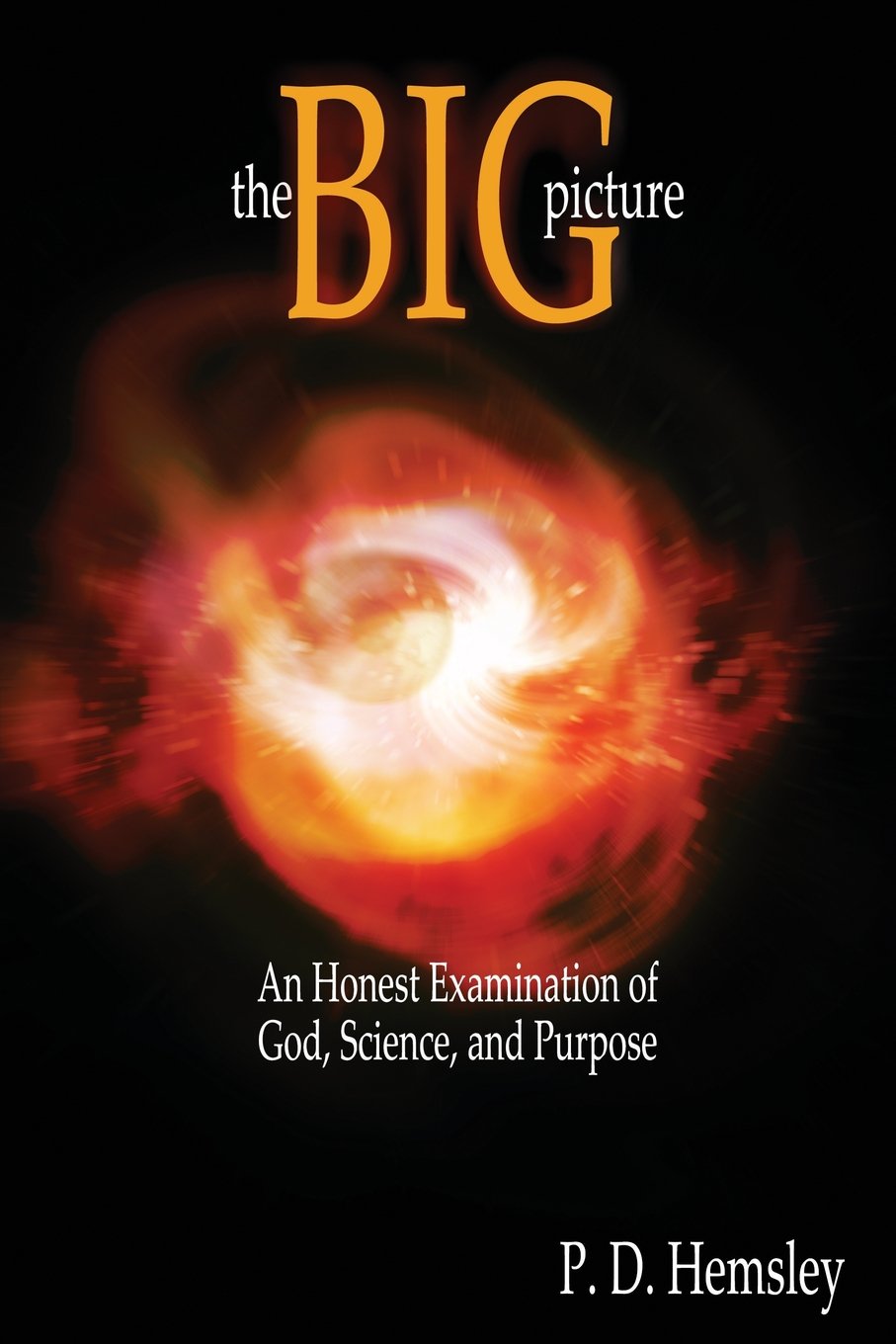

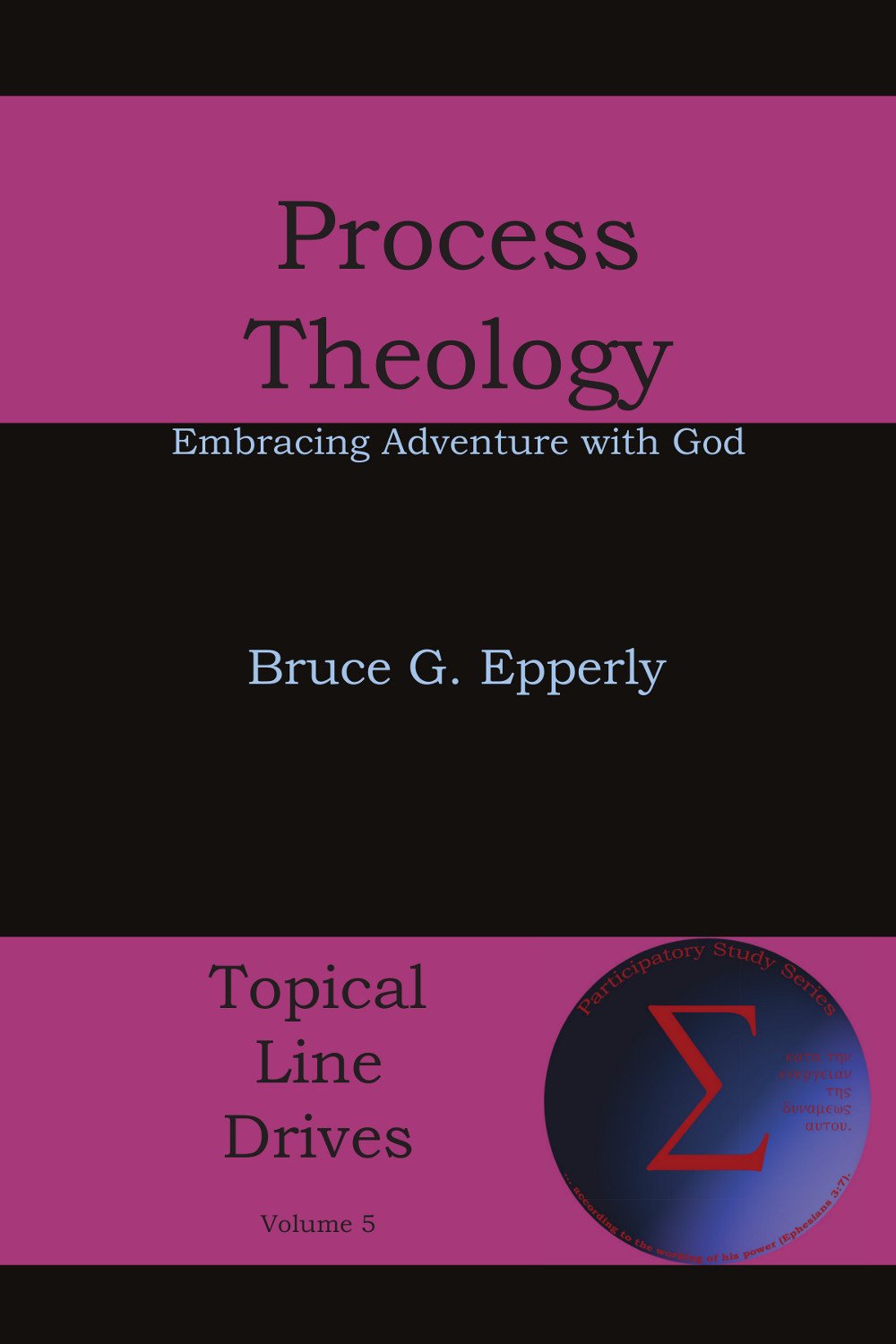





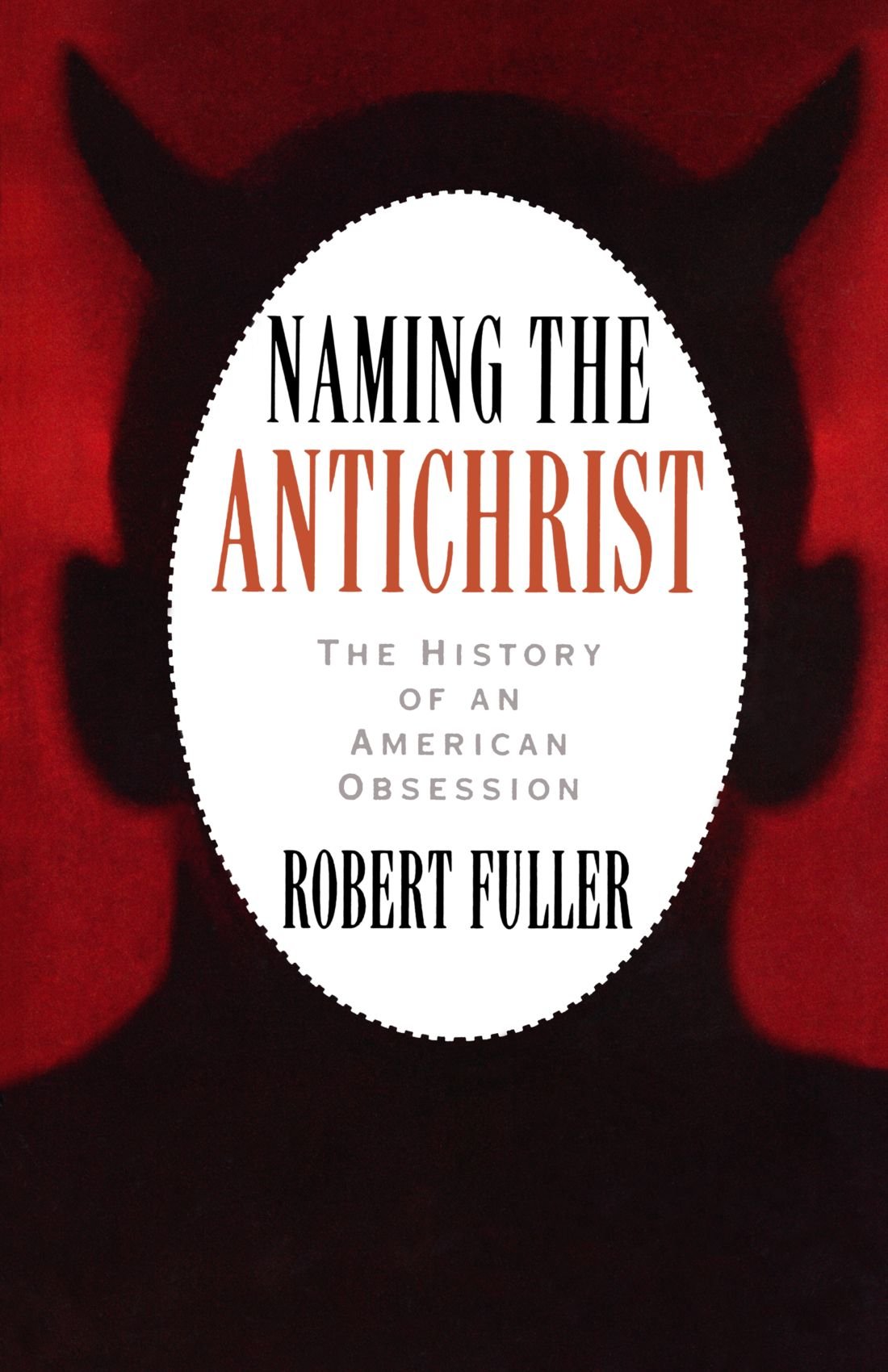
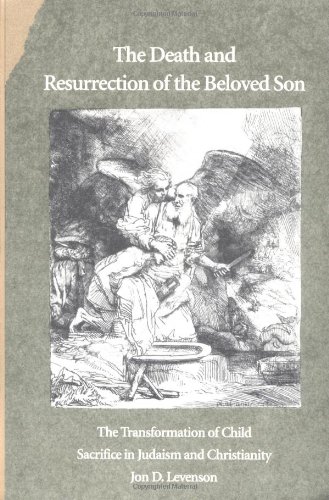


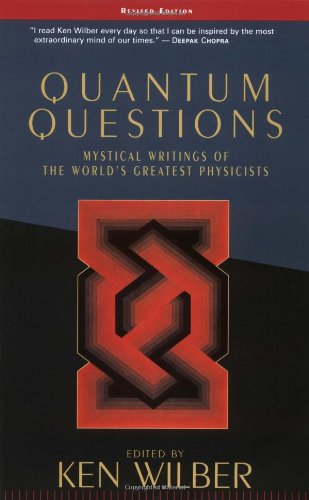
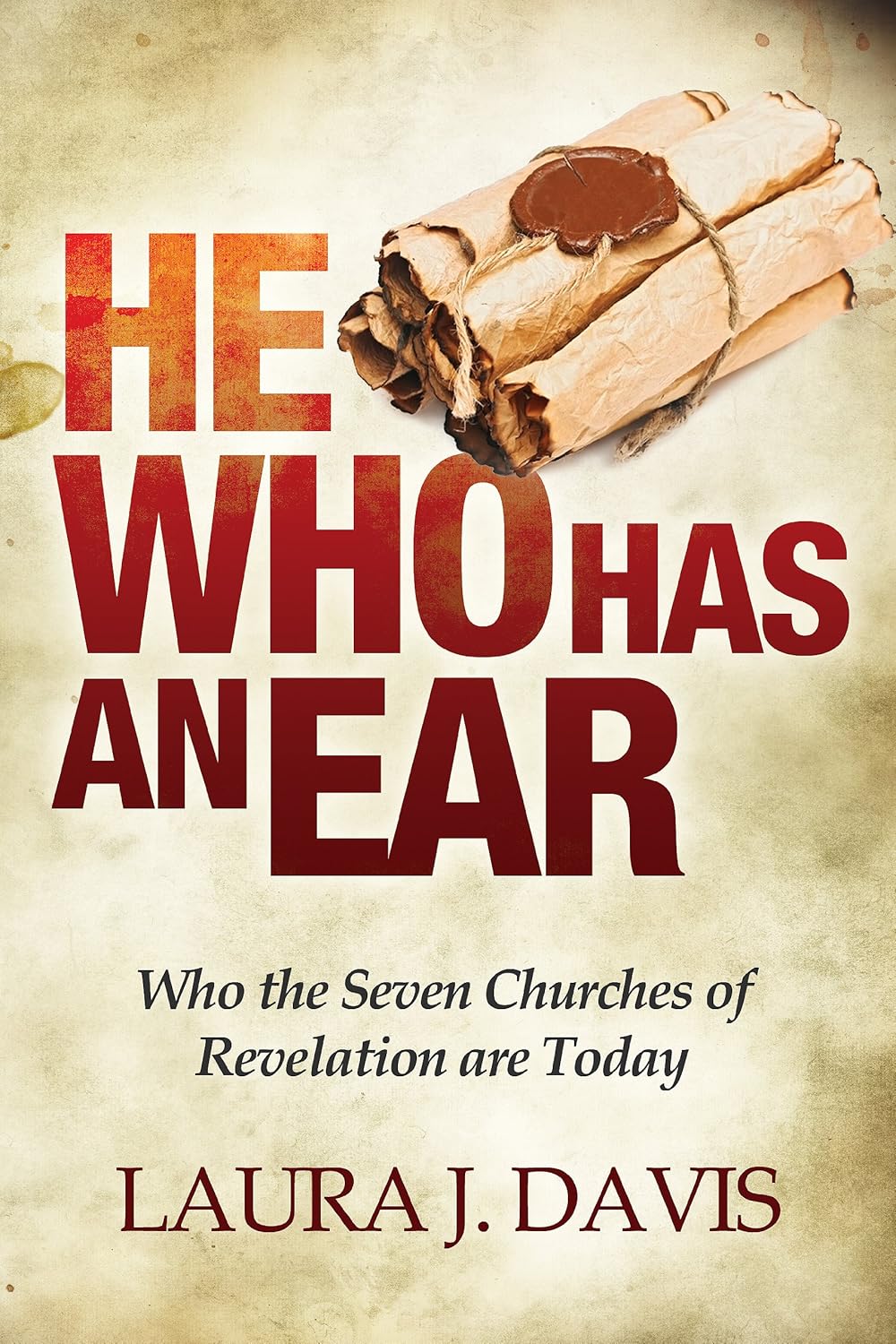
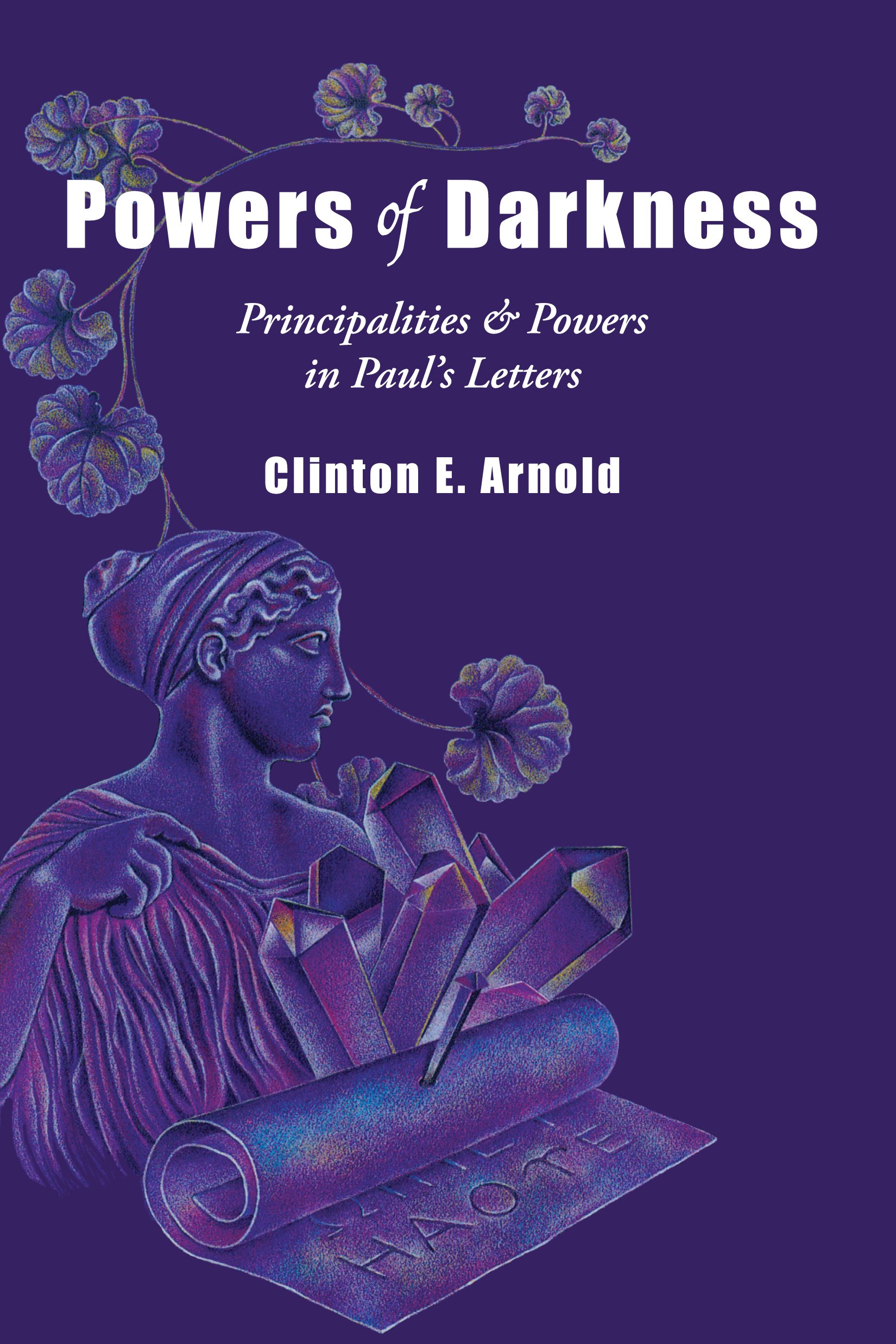
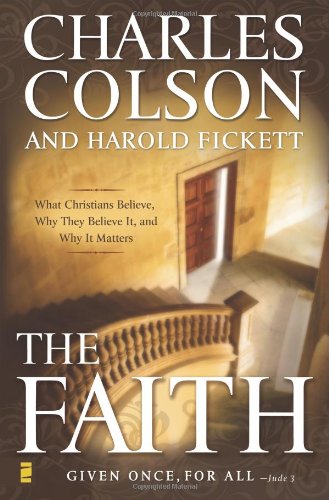
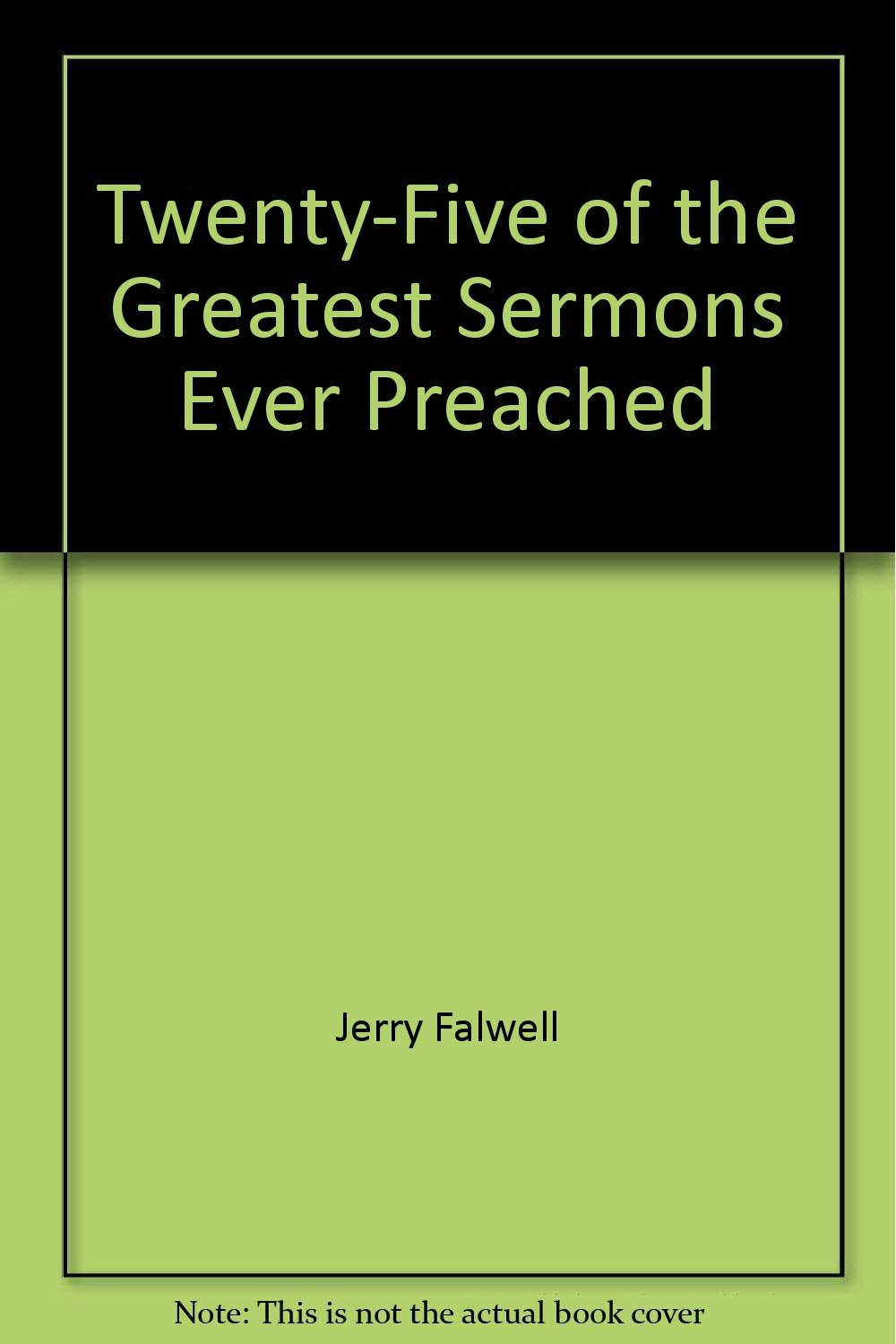










 354 Circles
354 Circles
 603 Goodreads Friends & Fans
603 Goodreads Friends & Fans

 Hello! I'm an author, historical Jesus scholar, book reviewer, and liberal Christian, which means I appreciate and attempt to exercise the humanitarian teachings of Jesus without getting hung up on any particular supernatural or religious beliefs.
The Bible is a magnificent book that has inspired and spiritually fed generations for thousands of years, and each new century seems to bring a deeper understanding of life’s purpose. This is true of not only Christianity; through the years, our age-old religions are slowly transforming from superstitious rituals into humanitarian philosophies. In short, we are growing up, and I am thrilled to be riding the wave.
I avidly read all thought-provoking religion titles. New authors: I'd love to read and review your book!
Hello! I'm an author, historical Jesus scholar, book reviewer, and liberal Christian, which means I appreciate and attempt to exercise the humanitarian teachings of Jesus without getting hung up on any particular supernatural or religious beliefs.
The Bible is a magnificent book that has inspired and spiritually fed generations for thousands of years, and each new century seems to bring a deeper understanding of life’s purpose. This is true of not only Christianity; through the years, our age-old religions are slowly transforming from superstitious rituals into humanitarian philosophies. In short, we are growing up, and I am thrilled to be riding the wave.
I avidly read all thought-provoking religion titles. New authors: I'd love to read and review your book!
 Hi! While Lee writes the articles and reviews the books, I edit, organize, and maintain the blog. The views expressed here are Lee's but I'm his biggest supporter! :-)
Hi! While Lee writes the articles and reviews the books, I edit, organize, and maintain the blog. The views expressed here are Lee's but I'm his biggest supporter! :-)
Connect With Me!